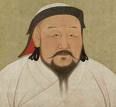
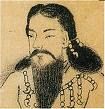
















A Quick History of the Japanese Emperors |
By T.L. Winslow (TLW), the Historyscoper™ |
© Copyright by T.L. Winslow. All Rights Reserved. |
Last Update: Jan. 8, 2022. |
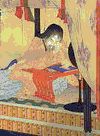







Westerners are not only known as history ignoramuses, but double dumbass history ignoramuses when it comes to the Japanese emperors. Since I'm the one-and-only Historyscoper (tm), let me quickly bring you up to speed before you dive into my Historyscopes.
Japan off the coast of E Asia has always enjoyed a measure of isolation that made it a semi-closed society that inherited the Chinese mindset that it's the center of the world and of civilization itself, and that everything outside it is barbarian land, while at the same time developing a pirate island mindset because it doesn't want China or anybody else to absorb it. Like the Chinese, their mindset favors the insect mentality, with individuality being discounted in favor of being a member of the Hive, even the emperors, yet the pirate factor along with a dose of Caucasian blood gives them a hankering for individuality too, making Japanese into Asian question marks and good Elvis impersonators. As the millennia went by and the world shrunk, Japan became a buffer state with the West, absorbing and adapting every alien culture and technology the way they did with the Chinese, and becoming an experiment in defeating the famous dictum: "East is East, and West is West, and never the twain shall meet, till Earth and Sky stand presently at God's great Judgment Seat" - Rudyard Kipling (1865-1936). After the rude awakening of U.S. gunboat diplomacy in the 19th century, Japan Westernized at jet speed and got infected with the mentality that it could take over the Pacific, getting too uppity and sneak-attacking the mighty U.S. at Pearl Harbor on Dec. 7, 1941, only to be humililated by being the first (only) country to have been nuked, turning it into a pacifist country, which may or may not last, they killed too many Chinese for them ever to forgive or forget, and the U.S. might not be able to protect them forever, check back with me if I'm still here.
Japan's origins are shrouded in mystery, and the earliest emperors are perhaps legendary, but there is no question of great antiquity.
According to geologists 30M years ago Japan was connected to the Korean Peninsula by a land bridge. About 10,000 B.C.E. the Jomon Culture in Japan begins (ends -5000), with hunting and fishing but no farming, and sunken pit-dwellings. About 8,000 B.C.E. Mt. Fuji in Japan begins erupting.


About 7400 B.C.E. 5'9" 38-55-y.-o. right-handed Kennewick Man (found in 1996 C.E.), with features resembling Ainu people of N Japan lives in modern-day Kennewick, Wash. along the Columbia River; he has mild arthritis and a healed spear wound, and was deliberately buried on his back, which is too bad as the U.S. Army Corps of Engineers covered up the site in 1998 to combat river erosion; he is not Caucasian, but Polynesian, like the modern-day Ainu in N Japan - looks like Star Trek actor Patrick Stewart?

On Feb. 11, 660 B.C.E. young whippersnapper Jimmu (Jinmu) Tenno (-711 to -585) ascends to the throne of Japan (until -585), founding the Yamato Empire as emperor #1; his motto is "All the world under a roof of eight poles", with everybody paying homage to the Sun goddess and obeying her god-on-earth, him.
In 583 B.C.E. Jimmu's son Tagashimimi tries to seize the Japanese throne, but is overthrown by his youngest brother Kamuyaimimi no Mikoto.

In 581 B.C.E. Suizei (-632 to -549), 3rd son of Jimmu becomes Yamato emperor #2 of Japan (until -549).
On May 10, 549 B.C.E. emperor (since -581) Suizei (b. -632) dies, and Annei (-577 to -511) becomes Yamato emperor #3 of Japan (until -511).
On Dec. 6, 511 B.C.E. emperor (since -549) Annei (b. -577) dies, and Itoku (-533 to -477) becomes Yamato emperor #4 of Japan (until -477).
About 500 B.C.E. the Japanese begin their own mix of Buddhism, Taoism, and Confucianism called Shinto (Way of Divine Power).
On Sept. 8, 477 B.C.E. emperor #4 (since -477) Itoku (b. -533) dies, and Koushou (Kosho) (-506 to -393) becomes Yamato emperor #5 of Japan (until -393) - what does he take?
On Aug. 5, 393 B.C.E. emperor (since -477) Koushou dies, and Kouan (Koan) (-427 to -291) becomes Yamato emperor #6 of Japan (until -291) - is it radioactivity in the waters, like those that created Godzilla?
On Jan. 9, 291 B.C.E. emperor (since -393) Kouan (b. -427) dies, and Kourei (Korei) (-342 to -215) becomes Japanese Yamato emperor #7 (until -215) - who's bragging?
On Feb. 8, 215 B.C.E. emperor #7 (since -291) Kourei (b. -342) dies, and next year Kougen (Kogen) (-273 to -158) becomes Japanese Yamato emperor #8 (until -158) - maybe the magic longevity ingredient is wild wolf pussy?
On Sept. 2, 158 B.C.E. emperor (since -215) Kogen (b. -273) dies, and Kaika (-208 to -98) becomes Japanese Yamato emperor #9 (until -98) - is it all the unlimited poontang?
On Apr. 9, 98 B.C.E. emperor (since -158) Kaika (b. -208) dies at age 111 after a reign of 59 years, and Sujin (-148 to -30) becomes Japanese Yamato emperor #10 (until -30) - are all these longevity champ emperors like Rosemary's Baby?
On Dec. 5, 30 B.C.E. emperor (since -98) Sujin (b. -148) dies, and his son Suinin (-69 to 70) becomes Japanese Yamato emperor #11 (until 70) - Westerners are all mudbloods in comparison? In 5 B.C.E. after his daughter Yamatohime-no-mikoto spends 20 years searching for the perfect spot, Emperor Suinin builds the first Ise Grand Shrine in Mie Prefecture, dedicated to the goddess Amaterasu Omikami.
On July 14, 70 C.E. emperor (since -30) Suinin (b. -69) dies at age 139 after a reign of almost 100 years, and his son Keiko (Keikou) (-17 to 130) becomes Japanese Yamato emperor #12 (until 130) - with longevity like that, they don't need Christ? In 128 he transfers his palace from Makimuku (Yamato) to Shiga (Omi) next to Kyoto Prefecture.
On Nov. 7, 130 emperor (since 70) Keikou (b. -17) dies at age 146, and Seimu (-191) becomes Japanese Yamato emperor #13 (until 191).
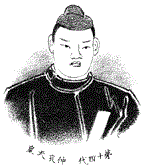
In 191 emperor (since 130) Seimu (b. ?) dies, and Chuai (Chuuai) (149-200), son of Prince Yamato Takeru and grandson of emperor #12 Keiko becomes Japanese Yamato emperor #14 (until 200).
In the 3rd cent. C.E. raw fish Sushi is invented in Japan.
On Feb. 2, 200 emperor (since 191) Chuai (b. ?) dies after rejecting the divine dreams of his consort Jingu (169-269) about a promised land over the sea, and she becomes regent and de facto emperor for her infant son Hondawake (Homutawake) (Ojin) (200-310), who becomes Japanese Yamato emperor #15 (until 310) after waiting until he's 70, then rules 40 years from two palaces in Osaka - is it something in the water? Meanwhile empress Jingu goes on to conquer the promised land of Korea over a 3-year period; in 1881 she becomes the first woman featured on a Japanese bank note - picture her clothes, only her clothes?
In 310 emperor (since 200) Hondawake (Ojin) (b. 200) dies, and in 313 his 4th son Nintoku (-399) becomes Japanese Yamato emperor #16 (until 399), going on to father emperors Richu, Hanzi, and Ingyo, and build a thorn field bank to control floods in the Kawachi Plains, becoming Japan's first large-scale engineering project.
In 399 emperor (since 313) Nintoku (b. ?) dies in Osaka, and is buried in the keyhole-shaped island tomb of Daisen-Kofun in Sakai, Osaka (biggest tomb in Japan), and next year his eldest son Richu (-405) becomes Japanese Yamato emperor #17 (until 405).
In 405 emperor (since 400) Richu dies, and his 9-ft.-tall younger brother (son of Nintoku) Hanzei (336-410) becomes Japanese Yamato emperor #18 (until 410), ruling from Shibakaki Palace in Tajihi.
In 410 emperor (since 405) Hanzei dies, and Ingyo (-453), 4th son of emperor #16 Nintoku becomes Japanese Yamato emperor #19 (until 453).
In 453 emperor (since 410) Ingyo dies, and the king of Silla in Korea sends 80 musicians to comfort his soul; Ingyo's eldest son Prince Kinashikaru is passed over for having an incestuous relationship with his half-sister, after which he tries to rally troops then commits suicide, and Ingyo's 2nd son Anko (-456) becomes Japanese Yamato emperor #20 (until 456).
In 456 emperor (since 453) Anko (b. ?) is murdered by Prince Mayowa no Okimi to get even for the execution of his father, and after a power struggle his younger brother Yuryaku (Bu) (418-79) becomes Japanese Yamato emperor #21 (until 479), becoming known for his skill at poetry and his patronage of sericulture.
In 479 emperor (since 456) Yuryaku (b. 418) dies, and next year after defeating his brother Prince Hoshikawa, his son Seinei (Shiraka) ("white-haired") (-484) (an albino?) becomes Japanese Yamato emperor #22 (until 484).
In 484 emperor (since 480) Seinei (b. ?) dies without heirs but after adopting grandsons Richu, Oke, and Woke, and next year Oke (whose father was killed with an arrow in a hunting expedition by emperor Yuryaku) becomes Japanese Yamato emperor #23 Kenzo (-487) (until 487), going on to have his daddy's remains dug up and reinterred in a mausoleum, and rule from Asuka.
In 487 emperor (since 485) Kenzo (b. ?) dies, and his brother Prince Oyoke (grandson of Richu) becomes Ninken (-498), Japanese Yamato emperor #24 (until 498).
In 498 emperor (since 487) Ninken (b. ?) dies, and his son Buretsu (-507) becomes Japanese Yamato emperor #25 (until 507).
In the 6th cent. C.E. the Japanese begin to practice tea drinking after priests bring it back from China.
On Jan. 7, 507 emperor (since 498) Buretsu (b. ?) dies without an heir, and Keitai (450-535), great-great-great-grandson of emperor #15 Hondawake (Ojin) becomes Japanese Yamato emperor #26 (until 531).
On Feb. 7, 531 emperor (since 507) Keitai (b. 450) abdicates in favor of his 66-y.-o. eldest son Ankan (469-535), who becomes Japanese Yamato emperor #27 (until 535), going on to construct large numbers of state granaries throughout Japan.
In 535 emperor (since 531) Ankan (b. 469) dies without an heir, and his younger brother Senka (-539) becomes Japanese Yamato emperor #28 (until 539).
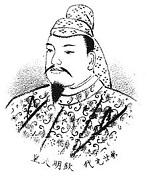
On Mar. 15, 539 emperor (since Jan. 26, 536) Senka (b. 467) dies, and on Dec. 5 his younger brother (3rd son of emperor Keitai) Kimmei (509-71) becomes Japanese Yamato emperor #29 (until Apr. 15, 571).
On Apr. 15, 571 Japanese Yamato emperor (since Dec. 5, 539) Kimmei (b. 509) dies, and next Apr. 30 his 2nd son Bidatsu (538-585) becomes Japanese Yamato emperor #30 (until Sept. 14, 585).

On Sept. 14, 585 emperor (since 572) Bidatsu (b. 538) dies, and on Oct. 3 his younger brother Yomei (518-87) becomes Japanese Yamato emperor #31 (until May 21, 587).
On May 21, 587 emperor (since 585) Yomei (b. ?) dies, and on Sept. 9 after a catfight between the Soga clan (which backs him) and the Mononobe clan, his younger half-brother (12th son of Kimmei) Hatsusebe becomes Sushun (520-92), Japanese Yamato emperor #32 (until 592).
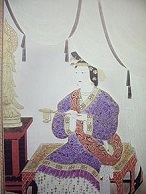
On Dec. 12, 592 emperor (since Sept. 9, 587) Sushun (b. ?) is assassinated by Soga Umako after he stupidly proclaims "I want to kill Soga Umako like this wild boar" during a hunting expedition, tipping him off; to avoid a power struggle, Princess Nukatabe, 3rd daughter of Kimmei (a Buddhist nun) becomes Suiko (554-628), Japanese Yamato emperor #33 (until Mar. 7 628), the first woman to ascend the Chrysanthemum Throne; the Japanese imperial court is moved from Yamato to the Asuka region.

In 594 Japanese empress Suiko issues the Flourishing Three Treasures Edict, officially recognizing Buddhism, and appoints capable pro-Buddhist Prince Shotoku (574-622) as regent; in 603 he establishes a Confucian-style centralized govt. with the Twelve-Level Cap and Rank System, followed next year by the 17-article First Japanese Constitution, patronizing Buddhism as the state religion, causing Shotoku to become the center of a Buddhist cult.
In 607 after receiving an invitation from new Chinese emperor Yang Di, Prince Shotoku of Japan sends a mission led by Ono no Imoko, complete with boarding students and a message containing the first known reference to Japan as "the Land of the Rising Sun" (Nihon). In 1958 the 10K yen Japanese bank note (highest denomination) features his image.
On Apr. 15, 628 emperor (since 592) Suiko (b. 554) dies, and next Jan. 4 after a power struggle with Prince Yamashiro (son of Prince Shotoku), Prince Tamura (grandson of Bidatsu and great nephew of Suiko) becomes Jomei (594-641), Japanese Yamato emperor #34 (until Oct. 9, 641); the feudal nobility begins its rise in Japan; Yamashiro commits suicide along with his entire family; Jomei goes on to compose the bestelling poem "Climbing Mount Kagu and Looking Upon the Land": "Countless are the mountains in Yamato,/ But perfect is the heavenly hill of Kagu./ When I climb it and survey my realm,/ Over the wide plain the smoke wreaths rise and rise,/ Over the wide lake the gulls are on the wing./ A beautiful land, the land of Yamato."

On Nov. 17, 641 emperor (since 629) Jomei (b. 594) dies, and next year his iron-balled wife Kogyoku (594-661) (personal name Ame Toyo-Takara Ikashi-hi Tarashi-hime) becomes the 2nd woman to ascend the Chrysanthemum Throne as Japanese Yamato emperor #35 (until July 12, 645).
On July 10, 645 Japanese statesman Soga no Iruka (b. ?) is assassinated by crown prince Naka (future emperor Tenji) in front of his mother Japanese empress (since 642) Kogyoku (ending the Soga clan after his father Soga no Emishi commits suicide), causing her to abdicate on July 12 in favor of the dude, who graciously steps aside for his uncle (her brother) Kotoku (596-654), who becomes Japanese Yamato emperor #36 (until Nov. 24, 654), building his palace in the city of Osaka in Naniwa at the mouth of the Yodo River on Osaka Bay (modern pop. 2.6M/17.2M), which becomes the capital; the Taikwa Reform (ends 708) (giveaway-takeaway?) begins, rebuilding the central Japanese state and limiting the powers of the nobility.

In 650 the Tamamushi Shrine in Nara is built, complete with oil paintings from the life of big-bellied Buddha, becoming the first known Japanese work with a narrative content.
On Nov. 24, 654 emperor (since 645) Kotoku (b. 596) dies, and his sister Kogyoku reascends the throne as Japanese Yamato emperor #37 Kogyoku (Saimei) (594-661) (until 661), with her son Prince Naka sharing power. In 655 she initiates the celebration of the Bon-Matsuri (Urabon) (Festival of Floating Lanterns) for the welcoming of ancestral spirits.
In 660 Tang China allied with the Silla attack the Paekche Kingdom in Korea, which is backed by Japan; the Tang take the capital of Sabi, force King (since 642) Uyja (Uija) Wang (-660) to surrender, and destroy the Paekche state; Uyja Wang dies.

In Jan. 661 Japanese Yamato emperor (since 642/654) Kogyoku/Saimei (b. 594) leaves Honshu with her army and navy and crosses the Sea of Japan to Iyo Province (Dogo Onsen) on Shikoku Island to help the Paekche recover their territory from the Silla, then reaches Asakura Palace in N Kyushu in May, where she assembles a combined Japanese-Paekche army; too bad, she dies on Aug. 24 before the army can depart, and is buried in Osaka, and her designated heir Prince Naka (her son with Jomei) becomes Tenji (Tenchi) (626-71), Japanese Yamato emperor #38 (until 671). In 662 he compiles Kiomihara Ritsuryo, the first known Japanese legal code, based on Confucianism.
On Jan. 7, 671 Japanese Yamato emperor (since 661) Tenji (b. 626) dies, and after a catfight among his 14 children by various mothers, his son Prince Otomo becomes Kobun (648-72), Japanese Yamato emperor #39; too bad, he only lasts 8 mo., until Aug. 21, 672, and Tenji's younger brother Prince Oama becomes Temmu (631-86), Japanese Yamato emperor #40 (until 686).
On Dec. 29, 684 there is a tsunami (Jap. "harbor wave") in Nankaido, Japan, the first in official Japanese records.


On Oct. 1, 686 emperor (since 672) Temmu (b. 631) dies, and his niece-wife Jito (645-702) becomes the 4th woman to ascend the Chrysanthemum Throne as Japanese Yamato emperor #41 (until 697), ruling from Fukiwara Palace in Yamato. In 686 she declares the game of Sugoroko (backgammon) illegal, along with chess, after beginning the wooden earthquake-proof Yakushi Temple in Nara in 680 (finished 697), housing the Yakushi Nyorai (Medicine Buddha), which arrived from China in 680.
In 697 C.E. emperor (since 686) Jito abdicates in favor of her grandson (with emperor Temmu) (2nd son of Prince Kusakabe and Princess Abe) Mommu (683-707), who becomes Japanese Yamato emperor #42 (until 707); she takes the title of daijo-tenno, and continues to wield power as a cloistered ruler from a Buddhist nunnery, starting a custom.
In 699 C.E. Enno Ozunu (d. 707), the sorcerer and founder of Shugendo (venerated by the Ninja) is banished to the Izu Province of Japan.
In the 8th cent. C.E. Korean art becomes distinct from Chinese and Japanese.
In 701 C.E. the Taiho Ritsu-Ryo Japanese legal code (Yoro Code) is written, and the Mikado becomes the sole proprietor of all land (until 1192).
On July 18, 707 C.E. emperor (since 697) Mommu (b. 683) dies, and his mother (who is also his 1st cousin once removed and twice removed, don't ask?) Gemmei (661-721) becomes the 5th woman to ascend the Chrysanthemum Throne as Japanese Yamato emperor #43 (until 715).
In 710 C.E. Nara replaces Fujiwara as the capital of Japan (until 794); Chinese Confucian principles of govt. are adopted, and Buddhist monasteries become centers of civilization - the tradition of an island nation that lives by copying and combining other cultures carries on? The Early Nara Period in Japanese art begins (ends 794).
In 712 C.E. Kojiki (Records of Ancient Matters), the first written records of the Japanese religion of Shinto, and the first history of Japan is written by anon., becoming the first written mention of Sumo Wrestling, the kinky push-of-war based on the Shinto religion, done under a mini-Shinto temple; the topknot (oichomage) is modeled after the sacred gingko biloba blossom - well slap my mawashi?
On Oct. 3, 715 C.E. Japanese Yamato emperor (since 707) Gemmei (b. 661) abdicates in favor of her spinster daughter Gensho (683-748), who becomes the 6th woman to ascend the Chrysanthemum Throne as Japanese Yamato emperor #44 (until Mar. 3, 724), ruling for her 14-y.-o. nephew crown prince Obito (future emperor Shomu), son of her deceased younger brother Mommu.
On Mar. 3, 724 B.E. Shomu (701-56) becomes Japanese Yamato emperor #45 (until Aug. 19, 749), becoming the first emperor to take a consort not born in the imperial household, a Fujiwara woman. Also in 724 Christian physicians allegedly visit Japan (until 748) and convert the empress. In 740 the capital of Japan is moved to Kuni-Kyo (until 744). In 741 Emperor Shomu calls for nat. establishment of provincial Buddhist temples. In 744 the Japanese capital city is moved back to Osaka.
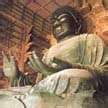
On Aug. 19, 749 C.E. Japanese Yamato emperor (since 724) Shomu (b. 701) abdicates in favor of his daughter Princess Takano, and becomes a tonsured Buddhist priest (first ever); she becomes Japanese Yamato emperor #46 Koken (718-70) (until 758), and takes vows as a Buddhist nun.
In 752 C.E. Emperor Shomu dedicates the 16-meter-high bronze Vairocana (Daibutsu) in the Todai-ji (Eastern Great) Temple in Nara, Japan (begun 743), becoming the world's largest bronze statue of the Buddha Vairocana.
On May 2, 756 C.E. C.E. Japanese Yamato emperor (724-49) Shomu (b. 701) dies, and all his household effects and property are dedicated to Buddha - this one's for you, Bud?
In 758 Japa C.E.e Yamato emperor (since 749) Koken (b. 718) abdicates in favor of her 2nd cousin (1st cousin twice removed?)Junnin (Oi) (733-65) (7th son of Prince Toneri, son of Temmu), who becomes Japanese Yamato emperor #47 (until 764), although Koken wields the balls in the family?
In 764 C.E. Empress Koken forces Junnin to abdicate, and becomes Japanese Yamato emperor #48 Shotoku (718-70) (until 770); she refuses to renounce her Buddhist vows, setting a precedent.
In 764 C.E. Japanese empress Shotoku supresses the rebellion of PM Fujiwara no Nakamaro, and orders a Million Pagodas built in thanks. In 765 the first known printing of picture books occurs in Japan.
On Aug. 28, 770 C.E. emperor (since 749/764) Shotoku (b. 718) dies, and her brother-in-law (husband of Shomu's daughter Princess Ikami) (son of Prince Shiki, and grandson of Tenji) Konin (709-82) (personal name Shirakabe) becomes Japanese Yamato emperor #49 (until 781).

In 781 C.E. Japanese Yamato emperor (since 770) Konin (b. 709) abdicates, and his 1st wife empress Ikami gets pissed off at him for passing over their son and curses him, causing him to strip her of her rank, after which she dies from some illness (official cover story?), after which his eldest son (by Takano no Niigasa, a descendant of King Muryeong of Baekje) Prince Yamabe becomes Kammu (737-806), Japanese Yamato emperor #50 (until 806).
In 793 C.E. a tea tax is introduced in China - where's them Adamses?
In 794 C.E. Japanese Yamato emperor Kammu moves his capital from Buddhist clergy-dominated Nara to the new city of Heian (Jap. "safety and tranquility") (modern-day Kyoto) in S Honshu Island, Japan (modern-day pop. 1.47M) (until 1185); the Early Nara Period of Japanese art (begun 710) ends, and the Heian Period in Japan (ends 1185).
In 805 C.E. tea is introduced from China into Japan by Buddhist saint Dengyo Daishi.
In 806 C.E. emperor (since 781) Kammu (b. 737) dies, and his son Heizei (774-824) becomes Japanese Yamato emperor #51 (until 809).

In 809 C.E. emperor (since 806) Heizei (b. 774) abdicates after falling ill in favor of his younger brother Saga (785-842), who becomes Japanese Yamato emperor #52 (until 823), and makes news by becoming the first emperor to drink tea, and spawning burnin' hunk of love grandson Minamoto no Toru (822-95), the inspiration for Hikaru Genji in "The Tale of Genji"; too bad, Saga also falls ill, while Heizei recovers and starts a rebellion in Nara, but gen. Sakanoue no Tamuramaro (758-811) defeats him after constructing huge lanterns on tops of the hills that attract Heizei's forces into a trap, after which annual celebrations are held in Aomori Prefecture featuring giant illuminated paper floats.
In 823 C.E. emperor (since 809) Saga abdicates in favor of his younger brother (3rd son of Kammu) Junna (784-840) (personal name Otomo), who becomes Japanese Yamato emperor #53 (until 833).
In 833 C.E. emperor (since 823) Junna (b. 784) abdicates in favor of his (blind?) nephew (2nd son of Saga) Ninmyo (810-50) (personal name Masara), who becomes Japanese Yamato emperor #54 (until 850).
In 850 C.E., Japanese Yamato emperor (since 850) Ninmyo (b. 827) dies, and his eldest son Montoku (827-58) (personal name Michiyasu) becomes Japanese Yamato emperor #55 (until 858).
In 858 C.E. emperor (since 850) Montoku abdicates in favor of his 8-y.-o. 4th son Seiwa (Mizunoo-no-Mikado) (850-88) (personal name Korehito), who becomes Japanese Yamato emperor #56 (until 876), with real power wielded by his regent grandfather Yoshifusa, the first member of the Fujiwara family to hold the honor.
In 876 C.E. emperor (since 858) Seiwa (b. 850) abdicates in favor of his eldest son Yozei (Sadakira) (869-949), who becomes Japanese Yamato emperor #57 (until 884), going on to found the Yozei branch of the Minamoto (Genji) clan. In 883 14-y.-o. Yozei reaches puberty, turning into a mischievous meanie that likes to feed live frogs to snakes and make dogs and monkeys fight; he progresses to enjoying the execution of criminals and then tries to personally slay people with his sword for imagined slights, causing his deposition to be plotted.

In 884 after Yozei orders some men to climb into trees then orders other men to poke at them with lances until they fall to their deaths, then really goes over the line by personally murdering a retainer and polluting his divine personage, regent Fujiwara no Mototsune lures him out of the palace on the pretext of attending a horse race, then has his carriage surrounded and tells him that he is being deposed, at which he cries like a baby, and later gets even worse, garroting women with musical instrument strings and throwing their bodies into a lake, running over people on his horse, and spending a lot of time chasing wild boars and Sika deer?; he is succeeded by his father's uncle (3rd son of Ninmyo) Koko (830-87) (AKA the emperor of Komatsu) (personal name Tokiyasu), who becomes Japanese Yamato emperor #58 (until 887), going on to revive the hawking excursion to Serikawa.
On Aug. 26, 887 C.E. emperor (since 884) Koko (b. 830) dies, and on Sept. 17 Uda (Sadami) (-931) becomes Japanese Yamato emperor #59 (until Aug. 4, 897).
In 895 C.E. the Fujiwaras become the ruling family in Japan (until 1192), and Japan and China begin drifting apart politically and culturally.
On Aug. 4, 897 C.E. emperor (since 887) Uda (-931) steps down in favor of his eldest son Daigo (Atsuhito) (885-930), who becomes Japanese Yamato emperor #60 (until Oct. 6, 930).
On Oct. 23, 930 C.E. emperor (since 897) Daigo (b. 885) goes, er, dies, and in 939 a long civil war against imperial rule begins (ends 1185).
In 966 C.E. Fujiwara Michinga (966-1028) becomes emperor of Japan (until 1027), and the Fujiwara family reaches its height; he becomes the father of three empresses and the grandfather of four emperors.
In 986 C.E. emperor En'Yu (b. 959) retires, and his only son Ichijo (Kanehito) (980-1011) becomes Japanese Yamato emperor #66 (until July 25, 1011).
On July 16, 1011 emperor (since July 31, 986) Ichijo (b. 980) dies, and his eldest son Sanjo (976-1017) becomes Japanese Yamato emperor #67 (until Mar. 10, 1016).
On Mar. 10, 1016 emperor (since July 16, 1011) Sanjo (975-1017) abdicates in favor of his 2nd son Go-Ichijo (Atsuhira) (1008-36), who becomes Japanese Yamato emperor #68 (until May 15, 1036).
On May 15, 1036 emperor (since 1016) Go-Ichijo (b. 1008) dies, and his younger brother Go-Suzaku (Atsunaga) (1009-45) becomes Japanese Yamato emperor #69 (until 1045).
On Feb. 7, 1045 emperor (since 1036) Go-Suzaku (b. 1009) dies, and Go-Reizei (1025-68) becomes Japanese Yamato emperor #70 (until May 22, 1068).
On May 22, 1068 emperor (since Feb. 5, 1045) Go-Reizi (b. 1023) dies, and his younger brother Go-Sanjo (Takahito) (1034-73) becomes Japanese Yamato emperor #71 (until Jan. 18, 1073).
On Jan. 18, 1073 emperor (since 1068) Go-Sanjo (1032-73)abdicates in favor of his eldest son Shirakawa (1053-1129) (personal name Sadahito), who becomes Japanese Yamato emperor #72 (until Jan. 3, 1087).
On Jan. 3, 1087 emperor (since Jan. 18, 1073) Shirakawa (1053-1129) retires to a monastery, and his son Horikawa (1079-1107) becomes Japanese Yamato emperor #73 (until Aug. 9, 1107).
In the 12th cent. C.E. the Bushido (Jap. "warrior way") unwritten code of ethics becomes the code of the Samurai knights, with the forfeiture of honor compelling hara-kiri (Jap. "stomach cutting") (seppuku), ritual self-disembowelment.
On Aug. 9, 1107 Japanese Yamato emperor (since 1087) Horikawa (b. 1079) dies, and his sole 4-y.-o. son Toba (1103-56) (personal name Munehito) becomes Japanese Yamato emperor #74 (until 1123), while real power is wielded by retired his cloistered retired grandather emperor Shirakawa.
In 1123 emperor (since 1107) Toba (b. 1103) is forced to abdicate by his cloistered grandfather emperor Shirakawa in favor of his 4-y.-o. son Sutoku (1119-64) (personal name Ahihito), who becomes Japanese Yamato emperor #75 (until 1142), going on to celebrate his 1st anniv. with a carriage procession outside the capital city to contemplate the flowers, attended by retired emperors Horikawa and Toba, with the nobles dressed in hunting clothes and the noblewomen in colorful dress, along with musicians and other performers; he later spends a 3-year exile copying the 10.5K-word Buddhist religious work Lankauarn Sutra in his own blood.
In 1142 emperor (since 1123) Sutoku (b. 1119) retires to a monastery in favor of his younger brother (great-nephew?), retired emperor Toba's 8th son Konoe (1139-55), who becomes Japanese Yamato emperor #76 (until 1155), with Toba still running things from the monastery; Konoe becomes the last Japanese Yamato emperor to build an imperial prayer temple; meanwhile retired emperor Sutoku is without powers, causing workaholics to rock the boat?
On Aug. 22, 1155 emperor (since Jan. 5, 1142) Konoe (1139-1155) dies without an heir, and on Aug. 23 retired emperor Toba's 4th son Go-Shirakawa (1127-92) (personal name Masahito) becomes Japanese Yamato emperor #77 (until Sept. 5, 1158).
On Sept. 5, 1158 emperor (since Aug. 23, 1155) Go-Shirakawa (1127-1192) abdicates in favor of his eldest son Nijo (1143-65) (personal name Morihito), who becomes Japanese Yamato emperor #78 (until Aug. 3, 1165), with real power still in daddy's hands.
On Aug. 3, 1165 emperor (since Sept. 5, 1158) Nijo (1143-65) falls ill and abdicates in favor of his infant son Rokujo (1164-76), who becomes Japanese Yamato emperor #79 (until Apr. 9, 1168); Nijo dies on Sept. 5.
On Apr. 9, 1168 3-y.-o. emperor (since Aug. 3, 1165) Rokujo (b. 1164-76) is deposed by his grandfather, and his 7-y.-o. uncle (4th son of cloistered emperor Go-Shirakawa) Takakura (1161-81) (personal name Norihito) becomes Japanese Yamato emperor #80 (until Mar. 18, 1180), writing the soundbyte: "The emperor is a ship, his subjects are water. The water enables a ship to float well, but sometimes the vessel is capsized by it."

On Mar. 18, 1180 the Genpei (Gempei)(Jisho-Juei) War in Japan, a civil war between the Taira (Heike) and Minamoto (Genji) clans (ends 1185) begins when Japanese Yamato emperor (since Apr. 9, 1168) Takakura (b. 1161) is forced to abdicate in favor of his eldest son Antoku (1178-85) (personal name Tokohito), who becomes Japanese Yamato emperor #81 (until Apr. 25, 1185).
On June 2, 1183 after gen. Minatomo no Yoshinaka (1154-84) AKA Lord Kiso enters the Japanese capital Heian, causing the Taira clan to flee along with 7-y.-o. Japanese Yamato emperor (since 1180) Antoku to avoid abdication, the Taira clan loses the Battle of Kurikara Pass (Tonamiyama) and flees W; on Sept. 8 in Antoku's absence retired emperor Go-Shirakawa elevates his 3-y.-o. brother Go-Toba (1180-1239), who becomes Japanese Yamato emperor #82 (until Feb. 18, 1198).In Jan. 1184 while celebrating in Kyoto and deciding to split from his clan and plot with his cousin Minamoto no Yukiie to kidnap Go-Shirakawa and establish their own govt. N of Kyoto, Minatomo no Yoshinaka flip-flops before Yoshinaka razes the Hojuji Palace and seizes Go-Shirakawa, and leads a coalition of Minamoto Taira sympathizers in the Siege of Hojujiden, causing Yoshinaka to flee across the Uji Bridge, fighting the Feb. 19 Second Battle of Uji (3rd in 1228), after which Yoshinaka is defeated and KIA by Yoshitsune on Feb. 21 at the Battle of Awazu, after which on Mar. 20 the Minamoto attack and capture a primary Taira fortress in Suma (W of modern-day Kobe) in the Battle of Ichi-no-Tani, then the Minamoto chase and defeat the fleeing Taira from Ichi-no-Tani to Yashima in the Battle of Kojima, followed on Mar. 22, 1185 by the Battle of Yashima near Shikoku, which is a V for the Minamotos


On Apr. 25, 1185 the Minamoto clan defeats the Taira clan in the decisive naval Battle of Dan-no-ura in S Honshu, and kills emperor Antoku the zoom-zoom way (hail of arrows), ending the Genpei War (begun 1180), but not before some crown jewels (sword and mirror) are tossed into the water (only the mirror is recovered); the spirits of the Taira warriors end up in the Heike Crabs of the Straits of Shimonoseki; the Taira clan is kaput, and the Minamoto Clan controls Japan; in 1192 Minamoto no Yoritomo (1147-99) is designated the first shogun ("barbarian-subduing general") (generalissimo), beginning a dual govt. system (shogun and emperor), which lasts until 1867, marking the rise of the Samurai knights (who wear a protective helmet and armor, and carry two curved swords, one long and one short), who follow the unwritten Bushido (Jap. "warrior way") code of ethics, with the forfeiture of honor compelling hara-kiri (Jap. "stomach cutting") (seppuku), ritual self-disembowelment; the Kamakura Era in Japan begins (ends 1333), marked by a powerless imperial court and a dominant military govt.; emperor Go-Shirakawa uses Yoritomo's half-brother Minamoto Yoshitsune (1159-89) in a doomed rebellion.
In the 1190s Zen Buddhism is introduced to Japan from China.
On Feb. 18, 1198 18-y.-o. emperor (since Sept. 8 1183) Go-Toba (1180-1239) is forced to abdicate by Minamoto Yoritomo, and his eldest son Tsuchimikado (1196-1231) becomes Japanese Yamato emperor #83 (until Dec. 12, 1210).
On Dec. 12, 1210 retired emperor Go-Toba (b. 1180) pressures emperor (since Feb. 18, 1198) Tsuchimikado (b. 1196) into abdicating, and Go-Toba's 3rd son Juntoku (1197-1242) (personal name Morinari) becomes Japanese Yamato emperor #84 (until May 13, 1221), while Go-Toba wields the real power as a cloistered emperor.
In May 1221 the Jokyu Incident in Japan sees retired emperor Go-Toba (b. 1180) attempt to seize power from the Kamakura shogunate and their Hojo regents, deposing his son, emperor (since Dec. 12, 1210) Juntoku (1197-1242) in favor of Juntoku's 4-y.-o. son Chukyo (1218-34), who becomes Japanese Yamato emperor #85 (until July 29); too bad, he loses, causing Chukyo to be forced to abdicate on July 29 after 2 mo. in favor of his 1st cousin (once removed) (nephew of Go-Toba) Go-Horikawa (1212-34), who on July 29 becomes Japanese Yamato emperor #86 (until Nov. 17, 1232); Juntoku is sent to exile on Sado Island for life.
On Oct. 26, 1232 after emperor (since 1221) Go-Horikawa (1212-34) resigns, his 1-y.-o. eldest son Shijo (1231-42) (personal name Mitsuhito) becomes Japanese Yamato emperor #87 (until Feb. 10, 1242), with his maternal relatives Kujo Michiie and Saionji Kintsune doing the real ruling after daddy dies in 1234.
On Feb. 10, 1242 11-y.-o. emperor (since 1232) Shijo (d. 1231) dies suddenly of an accident, and on Feb. 21 after 11 days of catfighting his 22-y.-o. 2nd cousin Go-Saga (1220-72) becomes Japanese Yamato emperor #88 (until 1246).
In 1246 emperor (since 1242) Go-Saga resigns, and his 4-y.-o. son Go-Fukakusa (1243-1304) becomes Japanese Yamato emperor #89 (until 1259).
In 1259 15-y.-o. (since 1246) Go-Fukakusa (b. 1243) abdicates at the insistence of his retired Go-Saga, and his 10-y.-o. brother Kameyama (1249-1305) (7th son of Go-Saga) becomes Japanese Yamato emperor #90 (until 1274).
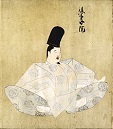
On Mar. 6, 1274 emperor (since Jan. 9, 1260) Kameyama (b. 1249) abdicates, and on Mar. 6 his cousin Go-Uda (1266-1324) becomes Japanese Yamato emperor #91 (until 1287); on Nov. 19 the Mongols under Kublai Khan attempt an invasion of Japan, but are repulsed by the samurais; too bad, Hakozaki Shrine in Fukuoka is burned to the ground, and later rebuilt with a sign reading "Surrender of the enemy nation" (Tekikoku kofuku)- try to imagine that scene?
In 1281 after returning to Japan and finding no suitable landing beaches because of defensive walls, a kamikaze (Jap. "divine wind") (typhoon) destroys Kublai Khan's fleet of 4.5K vessels and 150K men from Korea and the lower Yangtze Delta (largest naval invasion until D-Day in 1944) at Hakozaki Bay in Fukuoka, thwarting his invasion of Japan as in 1274, and causing the Japanese to later use the word kamikaze for their suicide bombers.
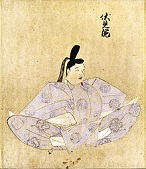
On Nov. 27, 1287 emperor (since Mar. 6 1274) Go-Uda (b. 1267) abdicates, and his 1st cousin Fushimi (1265-1317), 2nd son of Go-Fukakusa becomes Japanese Yamato emperor #92 (until Aug. 30, 1298).
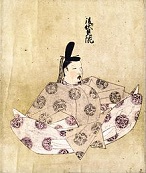
On Aug. 30, 1298 emperor (since Nov. 27, 1287) abdicates under the pressure of the shogunate, and his son Go-Fushimi (Fushimi II) (1288-1336) becomes Japanese Yamato emperor #93 (until Mar. 2, 1301).

On Mar. 29, 1318 after overthrowing the Kamakura shogunate in 1333 and establishing the short-lived Kenmu Restoration, Godaigo (Go-Daigo) (1288-1339) becomes Japanese Yamato emperor #96 (until Sept. 18, 1339), becoming the last emperor with power until the 1868 Meiji Restoration. In 1324 he unsuccessfully tries to regain power from dissolute regent Tatatoki Hojo of the Kamakura shogunate. In 1331 the Ashikaga Revolt (ends 1392) sees the Ashikaga family revolt and take control of Japan, setting up a rival emperor in the N in Kyoto against the emperor of the S in Yoshino, who is considered more legitimate because he controls the Japanese imperial regalia; on Oct. 22, 1331 after Godaigo's 2nd conspiracy to overthrow the shogunate becomes public, he is exiled to Oki Island (until 1333), and Kogon (1313-64) (personal name Kazuhito), 3rd son of Go-Fushimi becomes the 1st Japanese Ashikaga emperor of the N court of Kyoto (until July 7, 1333); the disputed imperial succession in Japan leads to the Genko War, a civil war against the Hojo regents (ends 1333). On July 7, 1333 after escaping from Oki Island and raising an army at Fungami Mt. in Hoki Province, Godaigo seizes the Japanese throne in Kyoto from Kogon, forcing the Hojo regents out of power and ending the Kamakura Shogunate along with the Genko War (begun 1331), beginning the Kemmu Restoration (ends 1336), attempting to end the days of the shoguns and rule like an emperor should.
On Feb. 25, 1336 Japanese emperor (since Mar. 29, 1318) Godaigo is ousted by shogun Takuji of the Ashikaga family, ending the Kenmu Restoration (begun 1333) and beginning the Muromachi Shogunate (ends 1573), installing a puppet emperor in Kyoto; the Kemmu Restoration (begun 1333) is kaput after three measly years, but its great dream stays alive to bite the shogunate in the ass all the way to the Meiji Restoration of 1868; the Chinese Mandarins attempt to deprive the pesky Japanese barbarians of their swords by adopting a policy of buying and importing all the swords from them they can get, which only causes them to produce more?
On Apr. 14, 1336 Shogun Ashikaga Takauji (1305-58) arrives in Munakata, the Battle of Tatarahama in Tatarahama on Hakata Bay in Fukuoka is a V for the Ashikaga Shogunate over the Kukuchi Clan of Higo, Kyushu, who are loyal to emperor Daigo, securing the island of Kyushu.
On July 4, 1336 the Battle of Minatogawa (Minato River) in Settsu Province in modern-day Kobe is a V for 35K Ashikaga rebels led by Ashikaga Takauji over 17.5k imperial forces loyal to Emperor Godaigo led by Kusinoki Masashige (1294-1336), who is KIA, becoming famous for his loyalty.
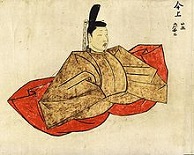
On Sept. 25, 1352 Go-Kogon (1338-74) (personal name Iyahito), 2nd son of Kogon becomes Japanese Ashikaga (northern) pretender emperor #4 (until Apr. 9, 1371).
In 1371 emperor (since 1352) Go-Kogon (b. 1336) abdicates in favor of his son Go-En'yu (1359-93) (personal name Ohito), who becomes Japanese Ashikaga (northern) pretender emperor #5 (until 1382).
On May 24, 1382 emperor Go-En'yu abdicates, and his eldest son Go-Komatsu (1377-1433) (personal name Motohito) becomes Japanese Ashikaga (northern) pretender emperor #6 (until 1412); meanwhile S emperor Go-Kameyama refuses to turn over the three sacred treasures until Oct. 21, 1392, making him sole Japanese Yamato emperor #100 (until 1412), and ending the Ashikaga Revolt (begun 1331).
In 1412 emperor (since 1382) Go-Komatsu (b. 1377) abdicates, and his eldest son Shoko (1401-28) becomes Japanese Yamato emperor #101 (until Aug. 30, 1428), after which only N court emperors are considered legitimate.
On Aug. 30, 1428 emperor (since 1412) Shoko (b. 1401) dies without an heir, causing him to adopt the son of Prince Fushimi-no-miya Sadafusa, who becomes Japanese Yamato emperor #102 Go-Hanazono (1419-71) (until 1464).
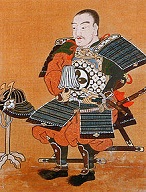

In 1457 Edo (Chiyoda) Castle is built by samurai warrior-poet Ota Dokan Sukenaga (1432-86) in the Edo clan town of Edo in SE Honshu Island, Japan; in 1603 Shogun Tokugawa Ieyasu makes it his HQ; in the 18th cent. the pop. tops 1M; in 1868 Emperor Meiji moves his capital there from Kyoto, renaming it Tokyo ("eastern capital"), renaming Edo Castle to Tokei Castle then Tokyo Castle, then Palace Castle, which is destroyed on the night of May 24/25, 1945 by an Allied firebombing raid, after which in 1948 the new Tokyo Imperial Palace is built.
On Aug. 21, 1464 emperor (since 1428) Go-Hanazono (b. 1419) abdicates, and his eldest son Go-Tsuchimikado (1442-1500) becomes Japanese Yamato emperor #103 (until Oct. 21, 1500). In Mar. 1467 the Onin War (ends 1477) in Japan begins as the 260 daimyos come unglued, and Japan descends into sengoku jidai (gen. warfare) for 10 years; in 1477 it ends after rival warlords die of natural causes, leaving Shogun Yoshimasa in control.
On Oct. 21, 1500 emperor (since 1464) Go-Tsuchimikado (b. 1442) dies, and on Nov. 19 his eldest son Go-Kashiwabara (1464-1526) (personal name Katsuhito) becomes Japanese Yamato emperor #104 (until May 19, 1526), going on to scrape the bottom as far as imperial authority vis a vis the shogun.
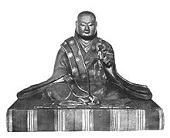
On May 19, 1526 emperor (since 1500) Go-Kashiwabara (b. 1464) dies, and on June 9 his 2nd son Go-Nara (1497-1557) (personal name Tomohito) becomes Japanese Yamato emperor #105 (until Sept. 27, 1557).
The real Shogun, not starring Richard Chamberlain? In 1542 Antonio da Moto and other Portuguese sailors become the first Europeans to reach Japan when they land at small Tanegashima Island in Kagoshima (off the S coast of Kyushu) aboard a shipwrecked Chinese ship; the muskets they are carrying are quickly copied, and spread all over Japan; too bad, they also bring Jesuits - changing the way they clean their houses?
On Apr. 22, 1547 the Battle of Bungo in Japan sees the Mori clan eliminate the bungling Shimazu clan as a rival for the shogunate.

On Sept. 27, 1557 emperor (since 1526) Go-Nara (b. 1497) dies, and on Oct. 27 his eldest son Ogimachi (1517-93) (personal name Michihito) becomes Japanese Yamato emperor #106 (until Dec. 17, 1586).

In June 1560 the Battle of Okehazama sees Oda clan lord Oda Nobunaga (1534-82) defeat rival lord Imagawa Yoshimoto's attempt to capture Kyoto, kicking the butts of his 25K-man army with his 3K-man army, after which in 1562 he enters the city of Kyoto and sets up shop in Komaki Castle, beginning a new era of unification in Japan, starting by going after the rival Saito clan then proceeding to conquer the whole island, with the motto "Tenka Fubu" ("Everything Under the Sky"); in 1568 after Ashikaga Yoshihide (b. 1538) is named Ashikagi shogun #14 then dies on Oct. 28 from disease, Oda Nobunaga marches on the Japanese capital Kyoto, gains the support of the emperor, and installs his own candidate in the succession struggle for shogun, Ashikaga Yoshiaki (1537-97) (15th and last Ashikagi shogun), brother of shogun #12 Ashikaga Yoshiteru; Jesuit missionaries are welcomed into Japan. In 1570 Japan opens the port of Nagasaki to overseas trade. In 1573 Oda Nobunaga ushers in the Azuchi-Momoyama Period in Japan (ends 1603).

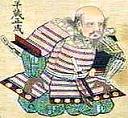
In 1582 Oda Nobunaga (b. 1534) is assassinated by one of his generals, Akechi Mitsuhide (1526-82); his other general Toyotomi Hideyoshi (1537-98) assumes control of his forces and kills Mitsuhide; samurai Hattori Hanzo (1542-96) saves shogun Tokugawa Ieyasu by leading him across Iga territory to his native Mikawa Province, becoming Japan's Robin Hood. In 1584 Gen. Toyotomi Hideyoshi takes complete control of Kyoto and gains the title kanpaku, representing civil and military control of all Japan. On Aug. 6, 1585 commoner Gen. Toyotomi Hideyoshi is appointed regent (tampaku), and attempts to establish a dictatorship in Japan; in Nov. he holds a Grand Kitano Tea Ceremony to wow his subjects, followed by the Great Sword Hunt, wherein he confiscates his subjects' weapons.
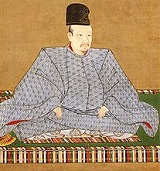
On Dec. 17, 1586 Japanese Yamato emperor (since 1557) Ogimachi (b. 1517) resigns in favor of his grandson (eldest son of his 5th son Prince Masahito) Go-Yozei (1571-1617) (personal name Kazuhito) becomes Japanese Yamato emperor #107 (until May 9, 1611), going on to preside over the rise of Toyotomi Hideyoshi and the Edo Shogunate (bakufu).
In 1587 Toyotomi Hideyoshi banishes Portuguese missionaries from Japan.


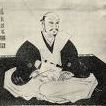
In Jan. 1592 Toyotomi Hideyoshi (1537-98) adopts his nephew Hidetsugu, then retires as regent (tampaku) on Feb. 11, assuming the title of taiko (retired regent); on May 7 the naval Battle of Okpo sees 24 Korean panokson (roofed) ships plus 30 support ships under adm. Ri (Yi) Sun Shin (1545-98) surprise 50 Japanese ships anchored in Okpo Harbor while its troops loot the city, and force a surrender, then on May 8 do ditto at Chokjinpo Harbor; on May 29 (15?) the naval Battle of Sacheon sees adm. Ri Sun Shi first use his technological breakthrough turtle ship (kobukson) (a ramming ship with iron plating or spikes on the deck, which he designed and has constructed on Chon Do Island), attacking 70 Japanese ships in Sacheon with 25 regular ships plus his new secret veapon ship; a Japanese bullet punctures the skin of Ri's left arm in one of the big history what-ifs?; on May 23 the Japanese invade Busan (Pusan), Korea with 7K men under Christian daimyo Konishi Yukinaga (1555-1600) with the aim of conquering the Asian mainland, and the cover story of obtaining safe passage to China, starting the Imjin (Seven-Year) War (ends 1598); the initial force is mistaken by the Koreans for a trading mission, and has a cake walk, killing 8.5K-30K, then taking Dongnae on May 25 after killing another 3K; eventually 200K men under Kato Kiyomasa (1562-1611) et al. arrive, with the Japanese troops being armed with Euro arquebuses, while the Koreans only have archers; Confucian scholar Yu Seong-ryong (1542-1607) (you sung wrong?) is appointed Korean PM, in charge of the military, and becomes a big backer of adm. Ri Sun Shin, who on Aug. 14 uses turtle ships to thwart the invasion at the naval Battle of Hansan Island, capturing 47 Japanese ships and destroying 12, and capturing 8K POWs, after which the Korean navy scores continual Vs to undermine Japanese successes on land, with Ri winning all 22 of his naval battles; on Nov. 1 the naval Battle of Busan sees Ri's 60 turtle ships defeat 470 Japanese ships using long-range cannon, while losing only six dead and 25 injured, after which Ri stops the battle to leave the Japanese some ships to evacuate Korea with.


On Jan. 8, 1593 the Siege of Pyongyang sees 36K Chinese Ming forces of Song Yingchang (1536-1606) under brothers Li Rusong (1549-98) and Li Rubo (1553-1619) cross the Yalu River and hook up with 4K Korean (Joseon) forces under chief minister Yu Seong-ryong (Songnyong) (1542-1607), then the 43K combined forces take Pyongyang from 42K Japanese forces under Christian gen. Konishi Yukinaga (1555-1600), with 16K Japanese vs. 800 allied casualties. On Feb. 12, 1593 the Battle of Haengju sees 2.3K Koreans under army CIC field marshal Gwon (Kwon) Yul (1537-99) repel 30K invading Japanese forces trying to storm a fortress, rolling boulders on them and giving them a taste of their technological breakthrough hwachas (anti-personnel mortars, each rocket containing 100-200 iron spikes), and finally stopping them after nine attacks; the Korean women help gather boulders while wearing "Haengju chimas", aprons to cover their sexy legs. In 1596 after the Japanese fail to invade Korea, peace is declared between Japan and China. On Mar. 19, 1597 Japan tries to conquer Korea for a 2nd time after the Chinese insult Hideyoshi by calling him king instead of emperor; in Aug. Hideyoshi and his son Hideyori amuse themselves with an elephant provided by the Spanish; on Aug. 28 after Korean adm. Ri Sun Shin is tortured and demoted for ignoring a message to meet the approaching Japanese fleet (thinking the area has hazardous rocks?), and is replaced with his rival adm. Won Gyun (Kyun) (1540-97), the naval Battle of Chilcheollyang on a narrow strait near Geoje Island becomes the only naval V for the Japanese in the Imjin War (begun 1592), with 500-1K Japanese ships surprising and defeating 169 turtle Korean ships, destroying 157 of them after inept Won Gyun makes all the wrong moves, and Adm. Bae Seol chickens out of this yang hell and runs with his 12 turtle ships; Korean adm. Yi Eok-gi (b. 1561) and adm. Won Gyun are killed after landing on a nearby island and stumbling into a fort filled with Japanese soldiers; after the battle, which destroys the Korean navy, adm. Ri Sun Shin is quickly reinstated, and is put in charge of the 12 ships and 200 men that had fled the battle of Chicken Hell Yang, redeeming himself on Oct. 26 by winning the naval "Miracle" Battle of Myongnyang (Myeongyang), defeating 133 Japanese ships and saving the war; Hideyoshi orders the crucifixion of Jesuits, and orders Christian missionaries to leave Japan, but backs off for fear of losing Portuguese trade.


On Sept. 18, 1598 Japanese ruler Toyotomi Hideyoshi (b. 1537) dies at Fushimi Castle, and his troups withdraw from Korea; on Dec. 16 the naval Battle of Noryang Sea sees 300 of 500 Japanese ships attempting to break out of a blockade destroyed or captured by 150 Korean and Chinese ships under Korean adm. Ri Sun Shin and Ming Chinese adm. Chen Lin (1543-1603), killing or wounding 12K-15K Japanese, with only 270 Korean and 400 Chinese casualties; too bad, Ri Sun Shin takes a Japanese bullet and is killed while trying to rescue Chen Lin, who let his ship get too close to the front line and got surrounded, after which his men conceal his death to keep the troops fighting, his nephew Yi Wan wearing his armor; on Dec. 24 the last Japanese troops evacuate Korea, ending the Ishin (Seven Years') War (begun 1592); Hideyoshi's 5-y.-o. son Toyotomi Hideyori (1593-1615) succeeds him under a council of regents led by Tokugawa Ieyasu (1543-1616), who restores the shogunate (until 1867). In 1599 China helps Korea expel the Japanese.








On Oct. 21, 1600 Tokugawa Ieyasu (1543-1616) wins a big V against his rival Ishida Mitsunari (1559-1600) (backing Toyotomi Hideyoshi's son Hideyori) at the Battle of Sekigahara after Kobayakawa Hideaki (1577-1602) flip-flops during the battle; Mitsunari is captured by villagers and executed on Nov. 6 in Kyoto, and his head placed on a stand, after which it mysteriously disappears a few days later; Christian daimyo Konishi Yukinaga (b. 1555) flees to Mt. Ibuki, and after capture has to be executed on Nov. 6 because as a Christian he refuses to commit hari-kari; Ieyasu moves the capital from Kyoto to Edo (Yedo) (Tokyo), and names himself shogun of the emperor, founding the Tokugawa Shogunate (Bakufu) in 1603 (ends 1868), the last Japanese shogunate, where Japan closes in on itself and becomes the ultimate martial medieval fantasyland; English navigator William Adams (AKA Miura Anjin) (1564-1620) (same age as William Shakespeare?) (whose portrait bears a striking resemblance to Hollywood actor Richard Chamberlain (1934-)?) wrecks his ship Liefde (originally called Erasmus) off the coast of Japan, becoming the first Englishman to visit Japan, and a pampered pet of shogun Tokugawa Ieyasu for the rest of his life; in return he betrays English trade secrets on shipbuilding - incl. the formula for the integrated cow chip?
In 1601 Japan grants free trade rights to the Dutch. In 1602 Spanish traders are admitted to E Japan.
In 1605 Tokugawa Ieyasu (b. 1543) retires, and his hideously militant anti-Christian son Tokugawa Hidetada (1579-1632) becomes Tokugawa shogun #2 of Japan (until 1623).
On May 9, 1611 Japanese Yamato emperor (since 1586) Go-Yozei (b. 1572) abdicates in favor of his son Go-Mizunoo (1596-1680), who becomes Japanese Yamato emperor #108 (until 1629).
In 1623 Tokugawa Hidetada (b. 1579) retires, and his eldest son Tokugawa Iyemitsu (Iemitsu) (1604-51) becomes Tokugawa shogun #3 of Japan (until 1651).
In Oct. 1629 shogun Tokugawa Iyemitsu declares that it is immoral for women to dance in public, and orders Kabuki Theater to become all-male, with women's roles performed by men in drag; the Japanese go to great lengths to make them appear feminine; meanwhile on Dec. 22 the Purple Clothes Incident sees Japanese Yamato emperor (since 1611) Go-Mizunoo (b. 1596) screw up and bestow honorific you know whats to 10+ priests despite the shogun's edict banning them for two years in order to break their longstanding bond, causing the shogun to intervene, cancel the deal, and force him to abdicate in favor of his 5-y.-o. 2nd daughter Meisho (1624-96) (personal name Okiko) (daughter of Kazuko, daughter of shogun Tokugawa Hidetada) (the name Meisho is a combo of previous female emperors Gemmei (707-15) and Gensho (715-24)), who becomes the 7th woman to ascend the Chrysanthemum Throne (last Empress Shotoku, d. 770), becoming Japanese Yamato emperor #109 (until Nov. 14, 1643).
In 1633 Shogun Tokugawa Iemitsu begins issuing the Sakoku (Jap. "locked country" Edicts (until 1639), closing Japan's borders to foreigners, and forcing the pesky Portuguese out.
Shiver me timbers? On Dec. 11, 1637 an uprising breaks out in Hara Castle in Shimbara, Nagasaki Prefecture, and on Dec. 17 the Japanese govt. sends 125K troops to quell the the Roman Catholic Shimbara Rebellion, massacring several thousand by Apr. 15, 1638; this is the last official ninja mission; Christianity is exterminated from Japan, and all foreign books and contact with Europeans are prohibited; the Kakure Kirishitan (hidden Christian) period begins, during which Japanese Christians have to go underground; by 1641 only a small group of Dutch merchants remain on Deshima (Dejima) Island ' (Jap. "Protruding Island") off Nagasaki; the Sakoku Edicts remain in effect until 1853.
On July 6, 1640 a Spanish ship from Macau arrives in Nagasaki, Japan with a delegation of 61 people; on Aug. 9 they are all decapitated and their heads stuck on poles - welcome to the Japans, filthy barbarian suckahs?
On Nov. 14, 1643 emperor (since 1629) Meisho (b. 1624) resigns in favor of her younger brother Go-Komyo (1633-54) (personal name Tsuguhito), who becomes Japanese Yamato emperor #110 (until Oct. 30, 1654), going on to criticize the shogunate for its violent nature.
In 1651 Tokugawa Iyetsuna (Yetsuna) (1633-80) becomes Tokugawa shogun #4 of Japan (until 1680), going on to quash two rebellions in Edo.
On Oct. 30, 1654 emperor (since 1643) Go-Komyo (b. 1633) dies 2 mo. after Buddhist priest Ingen Ryuki (Yinyuan Longqi) (1592-1673) arrives from China to reform Japanese Buddhism, and his younger brother (8th son of Go-Mizunoo) Go-Sai (Go-Saiin) (1638-85) (personal name Nagahito) becomes Japanese Yamato emperor #111 (until Mar. 5, 1663), marking time until his younger brother Prince Satohito can attain the age of majority.
On Mar. 5, 1663 emperor (since 1654) Go-Sai (b. 1638) abdicates in favor of his younger brother Reigen (1654-1732) (personal name Satohito), who becomes Japanese Yamato emperor #112 (until May 2, 1687).
In 1669 the Ainu lose the Battle of Syaksyain to the Japanese.

In 1680 Shogun Iyetsuna (b. 1633) dies, and his brother Tokugawa Tsunayoshi (1646-1709) becomes shogun #5 of Japan (until 1709), going on to promulgate laws protecting dogs and ordering the establishment of kennels, earning him the nickname "dog shogun"; he also tries to raise the living standard of the people, banning expensive fabrics, banning prostitution and waitresses in tea houses, and other authoritarian laws, which soon cause a smuggling boom. In 1682 he pubicly reads the Great Learning by Confucius, becoming an annual tradition.
On May 2, 1687 Japanese Yamato emperor (since 1663) Reigen (b. 1654) abdicates in favor of his 5th son Higashiyama (1675-1710) (personal name Asahito), who becomes Japanese Yamato emperor #113 (until July 27, 1709), going on to revive the ceremonial rice offering (Daijosai) by a new emperor.
On Feb. 4, 1703 the Revenge of the 47 Ronin sees 47 Japanese ronin condemned for avenging their executed master Asano Naganori forced to commit seppuku.
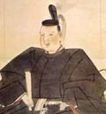
On July 27, 1709 Japanese Yamato emperor (since 1687) Higashiyama (b. 1675) abdicates in favor of his 7-y.-o. 5th son Nakamikado (1702-37) (personal name Yasuhito), who becomes Japanese Yamato emperor #114 (until Apr. 13, 1735), with daddy keeping the real power until he reaches maturity; meanwhile shogun Tsunayoshi (b. 1646) dies without a male heir, and after his widow selects him, Tokugawa Iyenobu (Ienobu) (1662-1712), eldest son of Tokugawa Tsunashige of Kofu becomes shogun #6 of Japan (until Nov. 12, 1712), going on to transform then undo his predecessors' laws and edicts, take away power from the chamberlains, and transform the bakufu (original a military govt. HQ'd in tents) from a military to civilian institution. On Mar. 13, 1710 the Buke Shohatto Laws for the Japanese nobility are promulgated by Shogun Iyenobu, starting with the soundbyte "The Way of Literature and Arms must be constantly pursued, human relations be clearly distinguished, and manners be correct".
On Nov. 12, 1712 Tokugawa Iyenobu (b. 1662) dies, and infant Iyetsugu (-1716) becomes shogun #7 of Japan (until 1716).
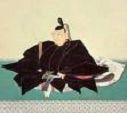
In 1716 shogun (since 1712) Iyetsugu (b. ?) dies, and Tokugawa Yoshimune (1684-1751) becomes shogun #8 of Japan (until 1745). In 1720 he breaks down and repeals the laws against European books and study.
On Apr. 13, 1735 Japanese Yamato emperor (since 1709) Nakamikado (b. 1702) abdicates in favor of his eldest son Sakuramachi (1720-50) (personal name Teruhito), who becomes Japanese Yamato emperor #115 (until June 9, 1747), going on to be said to be the reincarnation of Prince Shotoku (573-621), restoring the ricey imperial rites of rice. In 1739 a tax revolt of 84K farmers takes place in the Japanese province of Iwaki.
In 1745 shogun (since 1716) Tokugawa Yoshimune (b. 1684) dies, and Tokugawa Iyeshige (Ishege) (-1760) (a paralytic who has trouble speaking) becomes Tokugawa shogun #9 of Japan (until 1760).
On June 9, 1747 emperor (since 1735) Sakuramachi (b. 1720) abdicates in favor of his 6-y.-o. son Momozono (Toohito) (1741-62), who becomes Japanese Yamato emperor #116 (until Aug. 31, 1762).
In 1758 the Horeki Scandal in Japan sees a large number of young court nobles attempt restoration of direct imperial rule under Momozono and get their butts kicked by the shogunate.
In 1760 shogun (since 1745) Tokugawa Iyeshige (b. ?) dies, and Tokugawa Iyeharu (Ieharu) (1744-86) becomes Tokugawa shogun #10 of Japan (until 1786), initiating the Tanuma Era.

On Aug. 31, 1762 emperor (since 1747) Momozono (b. 1741) dies, and by his special decree his 5-y.-o. son Prince Hidehito (later Go-Momozono) is passed over for his older sister (2nd daughter of Sakuramachi) Go-Sakuramachi (1740-1813) (personal name Toshiko), who becomes Japanese Yamato emperor #117 (8th and last female monarch until ?) (until May 23, 1771).

On May 23, 1771 emperor (since 1771) Go-Sakuramachi (b. 1740) abdicates in favor of her 13-y.-o. nephew Hidehito (eldest son of Momozono), who becomes Go-Momozono (1758-79) (Jap. "Momozono II"), Japanese Yamato emperor #118 (until Dec. 16, 1779); too bad, he's sickly, and dies at age 22 in 1779.

On Dec. 16, 1779 emperor (since 1771) Go-Momozomo (b. 1758) dies, and next year his adopted son (2nd cousin) Kokaku (1771-1840) (personal name Tomohito) (6th son of Higashiyama's grandson Prince Kan'in-no-miya Sukehito) becomes Japanese Yamato emperor #119 (until 1817), inaugurating the Tenmei ("Dawn") Era.
In 1782 the Great Tenmei Famine in Japan begins (ends 1788), killing 1M of 30M.

In 1786 shogun (since 1760) Tokugawa Iyeharu (b. 1744) dies, and Tokugawa Iyenari (Iemari) (1773-1841) becomes shogun #11 of Japan (until 1837).
In 1789 the Ainu lose the Battle of Kunasiri-Menasi to the Japanese, falling completely under their control.
In 1793 Japanese shogun Iyenari (b. 1773) assumes personal rule, sinking into lush living while military discipline begins to break down. In 1797 U.S. ships begin trading with Japan on behalf of the Dutch (until 1809).

On Oct. 31, 1817 emperor (since 1780) Kokaku (d. 1840) abdicates in favor of his son Ninko (1800-46) (personal name Ayahito), who becomes Japanese Yamato emperor #120 (until Feb. 21, 1846), bowing to his daddy's wishes to be identified as "tenno", which becomes a custom.

In 1837 shogun (since 1786) Tokugawa Iyenari (b. 1773) dies, and Tokugawa Ieyoshi (Iyeyoshi) (-1853) becomes shogun #12 of Japan (until 1853), facing sentiment in favor of an imperial restoration along with Western pressure to open the country; meanwhile economic troubles improverish many samurai, turning them into ronin (masterless samurai); meanwhile former policeman Oshio Heihachiro (b. 1793) stages a futile rebellion in Osaka over years of famine and official corruption, and is killed; meanwhile merchant ship USS Morrison, carrying merchants and missionaries from Macao visits Naha in the Ryuku Islands, is bombarded at Edo and Kagoshima, and is snubbed by the xenophobic Japanese - it not only removes surface stains but protects from new stains?
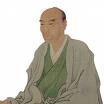


In 1839 the Japanese govt. clamps down on scholars of Rangaku ("Dutch Learning") (Western learning), imprisoning leading scholars Watanabe Kazan (1793-1841) and Takano Choei (1802-50); meanwhile Sakuma Shozan (1811-64) laps up Western science and Chinese philosophy at the same time, coining the phrase, "Eastern morality and Western technology" - be patient, Grasshopper?
On May 7, 1843 the first Japanese immigrants arrive in the U.S. in New York City; Pres. Tyler prophesies that the Pacific coast will be used to open up increased markets for the U.S. in China and Japan.

On Feb. 21, 1846 emperor (since 1817) Ninko (b. 1800) dies, and on Mar. 10 his 4th son Osahito becomes Komei (1831-67), Japanese Yamato emperor #121 (until Jan. 30, 1867), the last Kyoto emperor, and the last pre-modern (not messed up by the West) emperor, opposed to opening Japan up. In Mar. 1847 Komei establishes the Gakushuin school for the children of the nobility in Kyoto.

On July 8, 1853 disobeying an order to go to Nagasaki, Commodore Matthew Calbraith Perry (1794-1858) (brother of Oliver Hazard Perry) appears in Yedo (Tokyo) Bay in his flagship USS Mississippi with a steamship and two sail warships bearing a letter from U.S. Pres. Fillmore to Japan's emperor requesting protection for shipwrecked U.S. sailors (heretofore routinely executed), the right to provision U.S. ships, and trading privileges at Japanese ports; after presenting the letter at an elaborate ceremony on July 14, he retires to the Chinese coast to give them time to consider it - try to catch me riding dirty?


On Aug. 12, 1853 the #2-we-try-harder Russian frigate Pallada (Pallas), commanded by adm. Yevfimy Vasilyevich Putyatin (1803-83) arrives in Nagasaki, wowing the Japanese with his steam engine, and helping them manufacture their own by the end of the year led by mechanical genius Tanaka Hisashige (1799-1881), son of a tortoise-shell craftsman (the Thomas Edison of Japan?) - jokes about Japanese copying of other cultures here?
In 1853 shogun (since 1837) Tokugawa Ieyoshi (b. ?) dies, and Tokugawa Iyesada (Iesada) (-1858) becomes shogun #13 of Japan (until 1858).
In Feb. 1854 Commodore Matthew C. Perry returns to Japan with seven menacing "black ships", making his 2nd landing in Japan on Mar. 8, and on Mar. 31 near Yokohama he forces the Tokugawa shogunate to sign the Treaty of Kanagawa, acceding to U.S. demands, and opening two ports for trade; he brings back the Japanese word "taikun" (great prince), which becomes the English word tycoon; his Western aggression leads to the birth of Japanese nationalism?

On Feb. 7, 1855 the Treaty of Shimoda, negotiated by Russian adm. Yevfimy Putyatin and Toshiakira Kawaji (1801-68) of Japan begins their official commercial relationship.
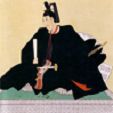
In 1858 shogun (since 1853) Tokugawa Iyesada (b. ?) dies, and Tokugawa Iyemochi (Iemochi) (1847-66) becomes Tokugawa shogun #14 of Japan (until July 20, 1866), going on to become the shogun introduced at gunpoint to white-is-rice U.S. Commodore Matthew Perry. In 1858 the Harris Treaty, negotiated by U.S. envoy Townsend Harris finally opens the U.S. to trade with Japan, effective July 4, 1859; Britain also obtains entry for British trade in five Japanese ports (incl. Yokohama), with the establishment of diplomatic and consular reps.






On July 5, 1861 (night) British legation first secy. Laurence Oliphant (1829-88) (Lord Elgin's private secy. on his expedition to China and Japan) is attacked by Japanese ronin in Edo, and is severely wounded after one swings a heavy 2-handed sword at him and a beam interferes with it. On Sept. 14, 1862 the Kanagawa (Namamugi) Incident sees top-knotted sword-wielding Japanese samurai murder English Shanghai merchant Charles Lennox Richardson (b. 1834) (a racist who whipped Chinese in China) for not dismounting for Satsuma bigwig Shimazu Hisamitsu (1817-87) as his retinue of 1K passes him on the Tokaido Road in Namamugi village, causing the Anglo-Satsuma War on Aug. 15-17, 1863. In Mar. 1863 after the entrance of barbarians into Japan and their humiliating Unequal Treaties piss-off the pop., causing them to commit acts of violence, backed by the Sonno Joi ("Revere the emperor and expel the barbarians") movement, emperor Komei issues an order to expel the barbarians; too bad, shogun Iyemochi, who is in bed with the Westerners to modernize his military won't enforce it, and when the pro-imperialists begin attacking the shogunate, he forms the Shinsengumi ("New Recruits"), an army of 234 ronin samurai led by Kondo Isami (1834-68), Kiyokawa Hachiro (1830-63) et al. for his protection as a police force; they get to wear cool outfits, becoming renowned for preventing Kyoto from burning down next year, although they have a dark side and are also known as the Wolves. On July 2, 1863 Japanese shogun Iyemochi negotiates on board the French warship Semiramis over the Kanagawa Incident of last Sept., apologizing and paying the British authorities £10K; too bad, the offending Satusuma Province refuses to pay their £25K fine or cough up the two samurai who did the killing, causing the pissed-off Brits to seize three foreign-built Satsuma warships worth 10x as much, then burn them after being fired upon by artillery, going on to fire on the Kagashima coast, burning 500 houses (5%) and killing five Japanese, while losing 11 of their own, incl. Capt. Josling of the 35-gun flagship Euryalus and his 2nd-in-command Cmdr. Wilmot (beheaded by the same cannonball), until the Brits retreat under Japanese cannonfire, causing the Japanese to claim a V, although the £25K fine is later paid; future Father of the Japanese Imperial Navy Heihachiro Togo (b. 1848) mans one of the port cannons, later claiming that the humiliation of it all launched his career; ironically the incident increases British ties with Satsuma, which goes on to modernize militarily with their help, then back the emperor against the shogunate, which the Brits like because the shogun is too much in bed with the French.

Speaking of French, in 1865 the Japanese shogunate builds Japan's first modern naval arsenal in Yokusuka, supervised by French engineer Francois Leonce (Léonce) Verny (1837-1908).


On July 20, 1866 rice-chomping Japanese shogun (since 1858) Tokugawa Iyemochi (b. 1847) dies of heart failure due to beriberi (vitamin B1 deficiency), ending his short marriage with emperor Komei's half-sister (daughter of emperor Ninko) princess Kazunomiya Chikako (1846-77) to unite the court and bafuku (shogunate), and on Aug. 29 Tokugawa Yoshinobu Hitotsubashi (1837-1913) (AKA Keiki) becomes the 15th and last Tokugawa shogun of Japan (until Nov. 19, 1867), and in Aug. he sends another expedition to Choshu Province in SW Honshu Island (capital Yamaguchi) to destroy the rebellious feudal fief, armed with French weapons; too bad, the other great feudal lords get pissed-off at his assumption of authority, and his expedition is routed.


On Jan. 30, 1867 emperor (since 1846) Komei (b. 1831) dies, and on Feb. 3 his 2nd son (only surviving child of six) Prince Mutsuhito becomes Japanese Yamato emperor #122 Meiji (pr. may-EE-jee) (1852-1912) (until July 20, 1912); his wife Empress Shoken (Masako Ichijo) (1849-1914) follows his lead and wears Western dress.
On Nov. 8, 1867 after Choshu Province forms a secret alliance with the British-armed Satsuma Province, and one day before Emperor Meiji issues a secret order to them to "slaughter the traitor", Hitotsubashi shogun Tokugawa Yoshinobu, the last Japanese shogun resigns and surrenders to the emperor, and is put under house arrest, then retires to Shizuoka for life, becoming a photographer; the emperor regains his position as actual head of the govt., ending 675 years of shogun rule (since 1292) and its Western humiliations; the new Meiji rulers are modernizers, bringing liberal and economic reforms; too bad, the Tokugawa clan continue in power, pissing off their rivals in Choshu and Satsuma.


On Jan. 3, 1868 the Choshu and Satsuma army seizes the imperial palace in Kyoto, and on Jan. 4 15-y.-o. Japanese Yamato emperor Meiji announces the Meiji Restoration (Ouseifukko), re-establishing the emperor's authority over the shoguns, with the imperial capital at Kyoto, and head Satsuma samurai Saigo Takamori (1842-77) ("The Last Samurai") pressures him into abolishing the shogunate and ordering all Tokugawa land confiscated, starting the Boshin War (ends May 1869); on Jan. 27-31 the Battle of Toba-Fushimi sees the 15K Tokugawa shogunate forces defeated by the smaller but more modern imperial army near Tobu and Fushima; ex-shogun Tokugawa Yoshinobu (Keiki) escapes to Edo, then surrenders in May; in Oct. Edo is renamed Tokyo ("eastern capital") (modern-day pop. 13.6M/37.8M), and the seat of govt. moved there from Kyoto next Mar.; an all-out attempt to catch up to the industrialized West is now launched while the heads are flying in the samurai-style Boshin War, where the last samurai swords get plenty of action; Saigo Takamori resists Westernization but finally goes for it, and the Age of the Samurai is kaput - like going far out for Buffalo wings?
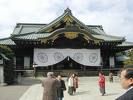
In June 1869 the Yasukuni (Jap. "pacifying the nation") Shinto Shrine in Chiyoda, Tokyo is built to house the kami (spirits) of those who die for the emperor, causing the emperor worship cult to go off the charts, its honor scrolls containing the names of 2,466,532 nutcases who kicked the bucket for him by 1951, incl. 14 war criminals (Hideki Tojo, et al.) when the San Francisco Peace Treaty makes them stop adding more; in 1972 Emperor Hirohito pays for a concrete enclosure for the archive.
In 1869 Japanese Yamato emperor Meiji accepts the surrender of the four most powerful clans (Choshu, Hizen, Satsuma, Tosa) and appoints the clan chiefs as his provincial govs. after reducing their revenues; the Meiji govt. in Japan consolidates the daimyo (feudal) and kuge (Kyoto) classes into the single aristocratic Kazoku (Jap. "flowery lineage") class. In 1871 an imperial decree abolishes all fiefs; a ministry of education is set up to provide universal education.
In 1871 after locals murder Ryukyu islanders, Japan claims control of the Ryukyu Islands (Okinawa) next year, then invades Taiwan in 1874 to punish the murderers, withdrawing in return for an indemnity; it annexes Okinawa in 1879, ignoring commercial development for military fortifications.
In Aug. 1872 after introducing universal military service, Japan introduces the Fundamental Code of Education, aiming for 100% literacy.

In 1873 Japan adopts the 1582 Gregorian Calendar, and in July begins the Land Tax Reform (ends 1881), drafted by prince Matsukata Masayoshi (1835-1924), making taxes payable in money instead of rice et al.
On Mar. 3, 1875 the U.S. Page Law bars entry of Chinese, Japanese, and "Mongolian" contract laborers, along with felons and prostitutes to the White Is Right U.S.
On May 25, 1875 the Unyo Maru Incident is started by Japanese vessels sailing provocatively into Pusan, Korea accompanied by gunboat Unyo Maru, after which two more warships arrive within two weeks; after showing off their loud big guns they finally leave on June 20 and arrive in Nagasaki on July 1.

On Feb. 26, 1876 Japanese ships under the command of Kuroda Kiyotaka (1840-1900) land at Kanghwa Island in Korea, and do what the U.S. couldn't, forcing Korea into its first modern treaty, the Treaty of Kanghwa, opening it to Japan and recognizing Korean independence from China (no protest by Peking); Pusan and two other ports are opened to Japanese trade for the next 20 mo., and Japan acquires extraterritoriality; King Kojong of Korea sends a high-level official to Japan to observe the Meiji reform programs.
In 1876 Japan a decree abolishes the samurai class of prof. warriors. On Jan. 29-Sept. 24, 1877 the Satsuma Revolt against the Meiji govt. in Japan is suppressed, becoming the last gasp of the samurais.
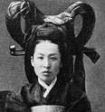
On July 23, 1881 a group of xenophobic Koreans attacks the Japanese legation in Seoul, drawing support from the Chinese, who on July 24 murder Min Kyom-ho, head paymaster of the Tribute Bureau, whose elder brother is the adopted brother of fatherless Korean spider lady ("the last empress of Korea") Queen Min (1851-95); on Aug. 26 the Chinese free the Taewon-gun and take him to Tianjin, returning him to power, where he begins a struggle with Queen Min for control of the Korean govt., resulting in the Chemulpo (Chemulp'o) Treaty of Amity and Trade (engineered by Queen Min), a mutual defense treaty with the U.S., compensating the Japanese and giving them the right to keep a legation guard.

On Dec. 4-6, 1884 the Korean Coup (Gapsin Jeongbyeon) of 1884 sees the Japanese-backed Reform Party attempt to oust the Chinese from Korea by taking advantage of its war with France, killing a number of ministers and capturing the king before Chinese troops recapture him and secure the palace in Seoul, causing the Japanese to flee along with reformist leader Kim Ok-kyun (Ok-gyun) (1851-94); full war between China and Japan is narrowly averted.

Beginning in 1885 large numbers of Japanese begin migrating to the U.S. On Apr. 18, 1885 the Li-Ito Convention between Li Hongzhang of China and Prince Ito Hirobumi (1841-1909) of Japan (who started out a xenophobe then studied at Univ. College London, becoming convinced that Japan needs to adopt Western ways) eases the Sino-Japanese confrontation over Korea with an agreement to withdraw troops and notify each other before intervening again; on Apr. 26 the British occupy Port Hamilton (Komun Island) after fearing that Russia might beat them to it, and the Chinese protest, but the British take their sweet time and stay until Feb. 27, 1887; on June 9 the Treaty of Tianjin, facilitated by British customs service (in China) man Sir Robert Hart recognizes the French protectorate of Tonkin in return for a promise to respect China's S border; on Dec. 22 Prince Ito forms Japan's first Euro-style cabinet, with himself as PM #1 (until Apr. 30, 1888). In Oct. 1885 Yuan Shikai (1859-1916) becomes resident Chinese dir.-gen. in Korea for diplomatic and commercial relations, working to strengthen China's grip and weaken Japan's for the next decade; meanwhile it's not working out the way he wants as Queen Min grows stronger, corrupting the Korean state, taxing the peasants, and increasing Japanese economic control.
The 1889 Japanese Constitution is promulgated, requiring the Imperial Diet to approve all laws; on July 1, 1890 the first Japanese gen. election for the Diet under the new constitution is held.



On Apr. 26, 1894 Confucian teacher Chon Pong-jun (1854-95) becomes leader of the growing Tonghak movement in Korea, which begins to win against govt. forces, causing the king on June 10 to call for help from the Chinese, who send 3K men, causing the Japanese to respond on June 25 with 8K men, who occupy Seoul, after which the two powers forget about the Tonghaks, starting the First Sino-Japanese War (ends 1895) on July 23 after Japan seizes the Kyongbok Palace, forces the Korean govt. to conclude an alliance with it on Aug. 26, and accept reforms; on Sept. 17 14 Chinese ships under Qing Beiyang Fleet adm. Ding Ruchang (1836-95) (who is wounded along with other offices on the bridge from the first shot of his own vessel the Dingyuan) are defeated by 12 Japanese ships under adm. Count Sukeyuki Itoh (1843-1914) on the Yellow Sea in Korea Bay at the mouth of the Yalu River in the naval Battle of the Yalu River (largest naval battle of the war), with five Chinese ships sunk and three damaged vs. four Japanese ships damaged and no ships sunk, and 1.35K Chinese vs. 290 Japanese casualties; the Chinese suffer from corrupt munitions manufacturers who fill some of the shells with cement instead of high explosives; on Oct. 24 (night) 10K Japanese troops under field marshal Yamagata Aritomo (1838-1922) cross the Yalu River by pontoon bridge into S Manchuria, suprising 23K Chinese troops under Chinese gen. Sung Ching, and defeating them after a 3-hour battle, losing only four killed and 140 wounded, after which the Japanese take the local capital of Antung (Dandong) in Liaoning Province, and divide forces, one group going after Port Arthur and the other Mukden; on Nov. 6 Kinchow (Jinxian) is captured, followed by the port of Dalian on Nov. 7; on Nov. 21 (midnight) the Battle (Massacre) of Lushunkou (Port Arthur) sees 15K Japanese troops attack and defeat 13K Chinese troops and capture the port by night, after which the Japanese enter the city, only to find Chinese soldiers dressed up as civilians sniping at them, pissing them off and causing them to round up and massacre adult males at will, ending with 4.5K Chinese killed vs. 29 Japanese; meanwhile the Tonghaks rise in rebellion, forming the Righteous Army (Uibyong), becoming the largest peasant uprising in Korean history (ends 1895).

On Jan. 18, 1895 the Japanese fleet bombards Teng-chow-foo across from Port Arthur; on Jan. 20-Feb. 12 the 23-day Battle of Weihaiwei (8 mi. E of Port Arthur) sees the remnants of the Chinese Beiyang Fleet bottled up in Weihaiwei Naval Base on the Shangdong Peninsula opposite Lushunkou sieged and taken despite a severe snowstorm (Jan. 31-Feb. 1) by the Japanese 2nd Army Corps under Iwao Oyama (1842-1916), who becomes a hero and is created marquis (1895) and field marshal (1898); Chinese adm. Ding Ruchang (b. 1836) is offered asylum in Japan, but commits suicide instead on Feb. 12, and the remnants of his Beiyang Fleet surrender to the Japanese in total humiliation, after which Ding is treated like manure and not given a proper Chinese burial by the govt. until 1912; the Chinese finally begin peace negotiations. On Oct. 8, 1895 Korean Queen Min (b. 1851) is murdered by a plot led by Japanese legation minister viscount Miura Goro (1847-1926); in Dec. Japan forces the Kabo Reforms (a clone of the Meiji reforms) on the Korean govt., elevating the Korean king to emperor, declaring total independence from China with a constitutional monarchy and a Japanese-style cabinet, a modern police force and army, independent judiciary, and 3-level education system; the yangban class system is abolished along with Chinese-style civil service exams.


On Jan. 12, 1898 Prince Ito Hirobumi becomes PM #7 of Japan; on June 30 marquis Okuma Shigenobu (1838-1922) (who learned English from a Dutch missionary and came to admire the New Testament and Declaration of Independence) becomes PM #8 as head of his new Constitutional Govt. Party, forming the first partisan cabinet in Japan, which only lasts 4 mo.; on Nov. 8 screw-civilians field marshal Yamagata Aritomo (1838-1922) (expert on Prussian military science, who modernized the army) becomes Japanese PM #3 (until Oct. 19, 1900), setting up rules giving the military control over the cabinet.
On Apr. 25, 1898 the Rosen-Nishi Agreement between Russia and Japan pledges non-intervention by both countries in the internal affairs of Korea, although Japan is allowed a free hand in economic matters.
In 1899 the Hokkaido Aborigine Protection Act is passed by Japan allegedly to salvage what's left of the aboriginal Ainu, but only ends up institutionalizing discrimination.
On Mar. 18, 1900 Russia sends a squadron to Chemulpo (Inchon) to attempt to secure a concession for a naval base at Masan on the S coast of Korea, but Japan opposes it, and the two countries keep moving toward a collision; meanwhile a railway is completed from Chemulpo to Seoul.
In July-Aug. 1901 after the 1900 announcement by Germany of its intention to build a strong battle fleet helps deteriorate Anglo-German relations, Britain and Japan begin negotiations in London for an alliance, marking the end of Britain's vaunted "splendid isolation". On Jan. 30, 1902 the Anglo-Japanese Alliance is signed, recognizing the right of China and Korea to be free from Russian designs, while Japan recognizes Britain's rights in China, and Britain recognizes Japan's in Korea; Japan demands the withdrawal of Russian troops from Manchuria; meanwhile the Russkies milk a 1896 timber concession on the Yalu River in N Korea, and war is just around the corner. On Mar. 20, 1902 France and Russia issue a declaration apparently favoring the Anglo-Japanese Alliance, but reserving the right to safeguard their interests, which is taken as an extension of the Franco-Russian Alliance to the Far East - an exaggeration? In July 1903 Russian forces cross the Yalu River and occupy a Korean town, causing Japan to go nonlinear.




The 1st time since the Mongols that an Asian military force totally defeats a European power? On Feb. 8, 1904 (10:30 p.m.) "World War Zero", AKA the Russo-Japanese War (ends Sept. 5, 1905) over control of Manchuria and Korea begins with a surprise Japanese attack on the Russian naval squadron at Port Arthur (Lushun), followed by a formal declaration of war by Japan on Feb. 10 (the U.S. doesn't learn a lesson from this?); the Japanese, led by field marshal (since 1898) Prince Iwao Oyama (1842-1916) immediately occupy Seoul, and force Korea to annul all concessions made to Russia. On Apr. 13, 1904 the Japanese score a V in the naval Battle of Port Arthur, and invade Manchuria by land. On Apr. 22, 1904 Russian Far East cmdr. gen. Alexei Nikolayevich Kuropatkin (1848-1925) (imperial war minister since 1898) sends 25K troops under lt. gen. M.I. Zasulitch to block the main road from Korea to Manchuria so that refinforcements from the 1-track Trans-Siberia Railway can be given the needed 6 mo. to build up; too bad, on Apr. 30-May 1 the Battle of the Yalu River near Wiju (Uiju), North Korea on the Chinese border, the first major land battle of the Russo-Japanese War is a V for 42K Japanese of the 1st Army under Gen. Count Kuroki Tamemoto (1844-1923), after which the Russkies retreat N toward Fenghuangcheng. On June 27, 1904 the Battle of Motien Pass in Manchuria is a V for the Japanese under Gen. Count Kuroki Tamemoto (1844-1923) over 25K Russians under Gen. Count Feodor Keller (b. 1850), allowing the pass to be occupied on June 30, blocking the main road between the coast and Liaoyang; Keller dies in a counterattack on July 31. On Aug. 1, 1904 the Japanese begin the Siege of Port Arthur; in Aug. Korea is forced to accept Japanese diplomatic and financial advisers; on Aug. 24-Sept. 4 the Russians are defeated by the Japanese 1st Army under gen. Count Kuroki Tamemoto at the Battle of Liaoyang, followed on Oct. 5-17 by the Battle of Sha-ho (Shaho) River in Oct.; trenches are first used in this war?

On Feb. 23, 1905 the Japanese, led by field marshal Iwao Oyama (1842-1916) begin advancing toward the regional capital of Mukden (Shenyang), defeating the Russians on Mar. 10 in the Battle of Mukden (Shenyang) (first modern battle in history, with 400K Japanese against 350K Russians, and over 200K casualties); on May 27-29 the Russian Baltic Fleet is destroyed by the Japanese fleet under "Father of the Japanese Imperial Navy" Adm. Heihachiro Togo (1848-) in the Battle of Tsushima Straits, discrediting the tsar's govt.; on July 24 Tsar Nicholas II and Kaiser Wilhelm II sign the secret Treaty of Bjorko (Björkö) for mutual aid. On Aug. 12, 1905 the Anglo-Japanese alliance is renewed for 10 years, and is extended to incl. India, and is modified to provide for mutual support in case of attack by only one other power at a time. They were made for each other, blini and sake? On Sept. 5, 1905 defeated Russia signs the Treaty of Portsmouth at the Portsmouth Naval Shipyard in Portsmouth, N.H. (first U.S. city to host the formal conclusion of a foreign war until ?), mediated by Pres. Teddy Roosevelt (who wins the 1906 Nobel Peace Prize for it), ending the Russo-Japanese War (begun Feb. 8, 1904), and becoming the first Asian V over a Western power in modern history, giving control of Manchuria to China, and control of Korea to Japan, bringing peace between Japan and Russia for four decades; Japanese foreign minister Jutaro Komura (1855-1911) is chief Japanese rep.; the Anglo-Japanese alliance is renewed for 10 years; Japanese field marshal Iwao Oyama becomes a bigger hero than ever, and is given the rank of prince in 1907.
1907 is the peak year for U.S. immigration, now at 1M (16M since 1840); in Feb. Congress passes the 1907 U.S. Immigration Act in an attempt to restrict it; on Mar. 14 Pres. Roosevelt negotiates a Gentleman's Agreement with Japan whereby it agrees to stop the emigration of laborers to the U.S., while Roosevelt agrees to block exclusionary legislation. In 1907 Sungjong abdicates, becoming the last Yi Dynasty king of Korea, and Japan is granted a protectorate over Korea. On Nov. 30, 1908 U.S. secy. of state Elihu Root and Japanese ambassador Kogoro Takahira sign the Root-Takahira Agreement, agreeing to mutual respect for each other's territorial possessions in the Pacific, upholding the Open Door Policy in China, and supporting by peaceful means the independence and integrity of China; U.S. fears of eventual war with Japan are relieved - it never had a chance to takahira root?

On Oct. 26, 1909 ardent Korean nationalist An Jung-geun (1879-1910) (who cut off parts of his fingers to write "Korean independence" on a Korean flag in blood) assassinates Japanese Prince Hirobumi Ito (b. 1841) on the railway platform in Harbin, Manchuria, where he came to meet with a Russian diplomat, giving the Japanese an excuse for the annexation of the Korean peninsula; An, who is hung next year believed that the Meiji emperor, whom he idolized, was being betrayed by Ito and that this would wake him up? - if this had never happened Japan would have been America's ally in WWII?

The end of the Choson People of Far East Asia? In May 1910 Japanese Gen. Terauchi Masatake (1852-1919) is appointed resident-gen. of Korea, and sets plans in motion for annexing it; on Aug. 22, 1910 Japan formally annexes Korea (until 1945) and names it Chosen (Choson), ending the Yi (Choson) Dynasty that ruled since 1392.

On July 30, 1912 emperor (since 1867) Meiji (b. 1852) dies, and is succeeded as Japanese Yamato emperor #123 (until Dec. 25, 1926) by his son Yoshihito, who assumes the name Taisho (Tai-Sho) (1879-1926); constantly ill, he plays little part in the ruling of the nation; the Taisho Period ("period of great righteousness") begins (ends 1926), known for the Taisho democracy, an opening to liberal Western trends.

On Dec. 25, 1926 Japanese (since 1912) Taisho (Yoshihito) (b. 1879) dies, and his son Hirohito becomes Japanese Yamato emperor #124 Showa ("enlightened peace") (1901-89) (until Jan. 7, 1989); he is not formally enthroned until Nov. 1928, but has the longest reign in Japanese history (until ?).

On Jan. 7, 1989 emperor (since 1926) Hirohito (b. 1901) dies, ending the Showa Era in Japan; the Heisei (Peace and Prosperity) Era begins with Akihito (1933-), who becomes Japanese Yamato emperor #125 (until ?). On Nov. 12, 1990 56-y.-o. poetry and tropical fish-loving Japanese Yamato emperor #125 Akihito (Heisei) (1933-) formally assumes the Chrysanthemum Throne in $64K 12-layer silk kimono, with his wife Empress Michiko (a commoner he met on a tennis court) ascending the smaller Michodai throne in a $100K 5-layered silk damask robe; a 10-day $97M coronation party is attended by heads of state from 158 nations, with only Afghanistan, North Korea, and Iraq not invited - does it tickle?
